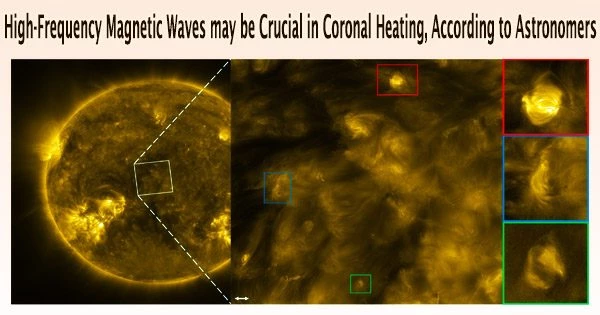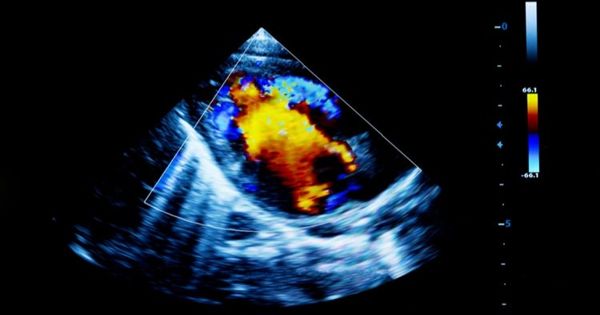High-frequency magnetic waves may be crucial in maintaining the sun’s atmosphere at millions of degrees, according to a collaborative research team led by the Royal Observatory of Belgium (ROB) and KU Leuven. This finding sheds a new light on the most intriguing solar mystery: what makes the sun’s atmosphere hotter than its surface?
One of the long-standing astrophysical puzzles is exactly this coronal heating problem. We are taught from an early age that temperature drops as you walk away from a heat source, yet the sun is an exception to this rule.
Coronal heating is a phenomenon in solar physics that refers to the extreme high temperatures observed in the Sun’s outermost layer, known as the solar corona. The core of the Sun, where nuclear fusion takes place, is extremely hot, with temperatures exceeding millions of degrees Celsius.
However, the photosphere, the surface of the sun, is only around 200 times hotter than the corona, the solar atmosphere’s outermost layer. The photosphere of the Sun has a temperature of about 5,500 degrees Celsius (9,932 degrees Fahrenheit), while the temperature in the solar corona can reach over a million degrees Celsius (over 1.8 million degrees Fahrenheit).
Prof. Tom Van Doorsselaere at KU Leuven says, “Over the past 80 years, astrophysicists have tried to solve this problem and now more and more evidence is emerging that the corona can be heated by magnetic waves.”
This new insight has been developed from observations by the Extreme Ultraviolet Imager (EUI) telescope onboard Solar Orbiter, a spacecraft of the European Space Agency ESA, that is currently observing the sun from behind.
Over the past 80 years, astrophysicists have tried to solve this problem and now more and more evidence is emerging that the corona can be heated by magnetic waves.
Professor Tom Van Doorsselaere
The ROB-operated EUI telescope creates photographs of the solar corona with unheard-of resolution. The energy of these high-frequency waves contributes to the heating of the solar atmosphere, and their observations show rapid oscillations in the smallest magnetic structures of the solar corona. The findings are published in The Astrophysical Journal Letters.
The fundamental query that the researchers were trying to answer was whether the energy coming from these novel, fast oscillations was more than the energy coming from known, analogous, but slower oscillations.
Understanding the mechanisms responsible for coronal heating is not only important for solving a fundamental astrophysical puzzle but also for practical reasons. The extreme temperatures of the solar corona are responsible for the solar wind, which can impact Earth’s magnetosphere and lead to space weather phenomena that affect satellite communications, power grids, and other technological systems.
The scientific team conducted a meta-analysis, a statistical technique for combining data from many scientific studies to identify undiscovered commonalities. Dr. Daye Lim, lead author, concluded that high-frequency waves give a more significant contribution to the total heating generated by waves than low-frequency waves.
Dr. David Berghmans, the principal investigator of EUI, says, “Since her results indicated a key role for fast oscillations in coronal heating, we will devote much of our attention to the challenge of discovering higher-frequency magnetic waves with EUI.”









![Report on Overall activity on AB Bank ltd [part-2]](https://assignmentpoint.com/wp-content/uploads/2013/04/ab-bank2-110x55.jpg)






